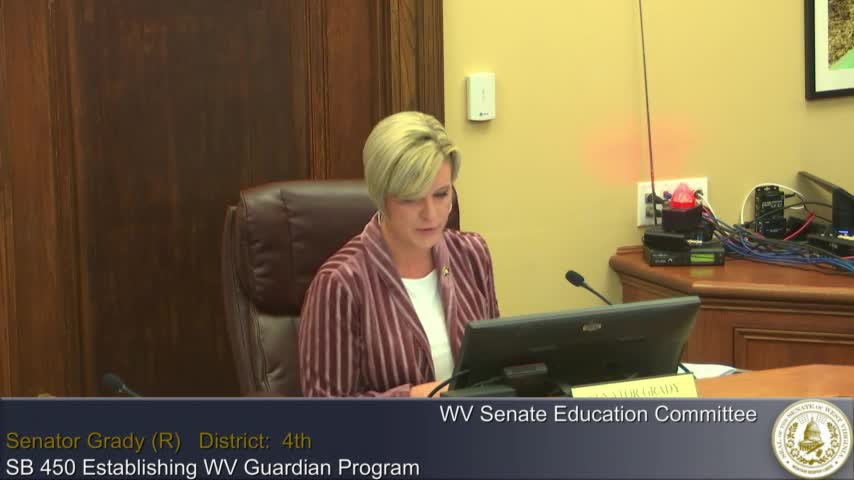State Board mandates wearable panic alert systems in all schools
February 25, 2025 | 2025 Legislature WV, West Virginia
This article was created by AI summarizing key points discussed. AI makes mistakes, so for full details and context, please refer to the video of the full meeting. Please report any errors so we can fix them. Report an error »

The West Virginia Senate Education Committee convened on February 25, 2025, to discuss significant safety measures aimed at enhancing security in schools. A key focus of the meeting was the proposed committee substitute for Senate Bill 434, which mandates the implementation of a wearable panic alert system in every school across the state.
The bill requires the State Board, in collaboration with the Division of Homeland Security and Emergency Management, to establish rules for the wearable panic alert system. This system must be capable of integrating with local public safety infrastructure to facilitate 911 calls and mobile activations, as well as to initiate campus-wide lockdown notifications.
Under the proposed legislation, each county board is responsible for providing every employee assigned to a school facility with a panic alert device. This device will enable immediate communication with local emergency response agencies. Additionally, the bill stipulates that all school employees must receive training on the proper use of these devices before the start of each school year.
Furthermore, the legislation mandates that security data within school facilities, including surveillance cameras, maps, and access control information, must be accessible to local law enforcement agencies.
The committee concluded the discussion on the bill, inviting questions from members regarding its implications and implementation. This proposed legislation represents a proactive step towards improving safety protocols in West Virginia schools, reflecting a growing emphasis on emergency preparedness in educational environments.
The bill requires the State Board, in collaboration with the Division of Homeland Security and Emergency Management, to establish rules for the wearable panic alert system. This system must be capable of integrating with local public safety infrastructure to facilitate 911 calls and mobile activations, as well as to initiate campus-wide lockdown notifications.
Under the proposed legislation, each county board is responsible for providing every employee assigned to a school facility with a panic alert device. This device will enable immediate communication with local emergency response agencies. Additionally, the bill stipulates that all school employees must receive training on the proper use of these devices before the start of each school year.
Furthermore, the legislation mandates that security data within school facilities, including surveillance cameras, maps, and access control information, must be accessible to local law enforcement agencies.
The committee concluded the discussion on the bill, inviting questions from members regarding its implications and implementation. This proposed legislation represents a proactive step towards improving safety protocols in West Virginia schools, reflecting a growing emphasis on emergency preparedness in educational environments.
View full meeting
This article is based on a recent meeting—watch the full video and explore the complete transcript for deeper insights into the discussion.
View full meeting